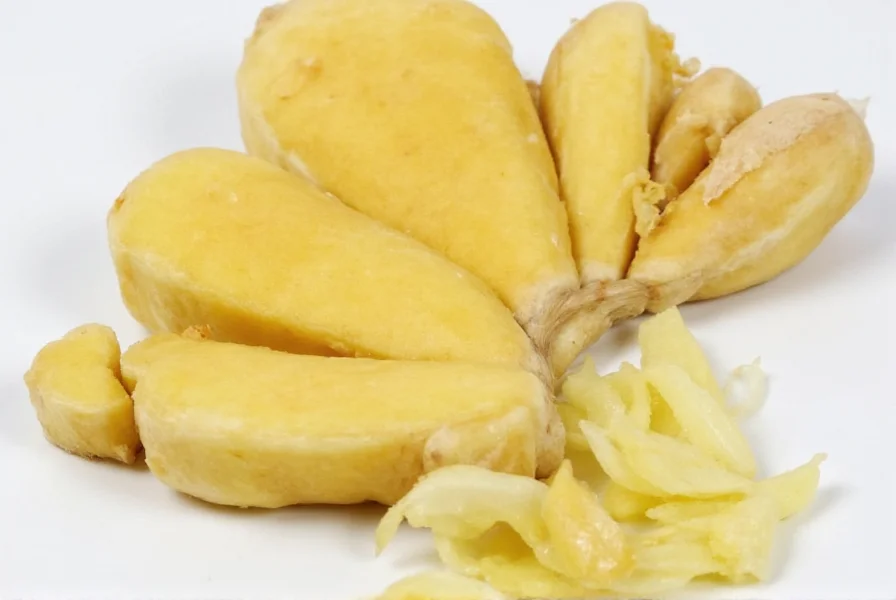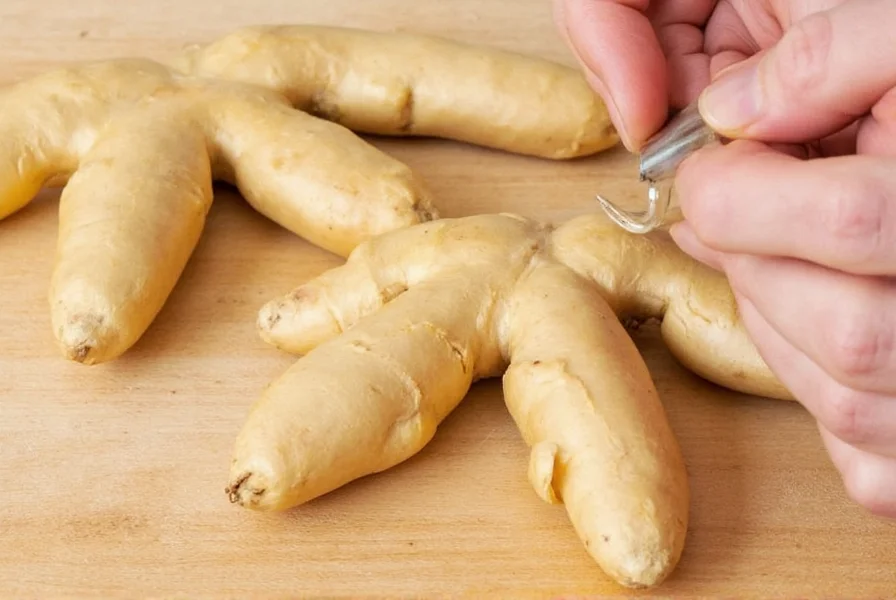Proper storage of cut ginger root preserves its pungent flavor and prevents spoilage. Fresh ginger contains valuable compounds like gingerol that degrade quickly when exposed to air and moisture. Understanding the best preservation techniques ensures you maintain maximum freshness and culinary value from your ginger.
Why Proper Ginger Storage Matters
Once ginger root is cut, its cellular structure becomes exposed, accelerating oxidation and moisture loss. Without proper storage, cut ginger develops mold within days or becomes fibrous and dry. The right storage method maintains ginger's essential oils and prevents bacterial growth while preserving its distinctive spicy-sweet flavor profile.
Key Factors in Ginger Preservation
Three elements determine successful ginger storage after cutting:
- Moisture control - Excess moisture encourages mold growth
- Air exposure - Oxygen causes oxidation and flavor degradation
- Temperature stability - Consistent cool temperatures slow decomposition
Addressing these factors properly extends ginger's shelf life significantly compared to improper storage methods.
Best Methods for Storing Cut Ginger Root
Refrigeration Method (1-2 Weeks)
This approach works best for short-term storage of cut ginger:
- Pat cut ginger pieces dry with a clean paper towel
- Place ginger in an airtight container with a fresh paper towel
- Store in the main compartment of your refrigerator (not the door)
- Replace paper towel if it becomes damp
The paper towel absorbs excess moisture while the airtight container prevents odor transfer. This method preserves ginger's texture and flavor for 10-14 days.

Freezing Method (4-6 Months)
For long-term storage of cut ginger root, freezing preserves both flavor and usability:
- Peel and slice ginger into 1/4-inch thick pieces
- Arrange slices on parchment paper without touching
- Flash freeze for 1 hour until solid
- Transfer to freezer bag, removing excess air
- Label with date and return to freezer
Alternatively, grate ginger before freezing in ice cube trays with water or oil. Frozen ginger can be used directly in cooking without thawing, making it ideal for smoothies, stir-fries, and soups. This method preserves ginger's essential compounds for 4-6 months.

Alternative Storage Options
When refrigeration or freezing isn't available, consider these alternatives:
| Method | Duration | Best For |
|---|---|---|
| Submerged in sherry or mirin | 3-4 weeks | Cooking applications where alcohol complements dish |
| Covered in neutral oil | 2-3 weeks | Quick cooking methods like stir-frying |
| Dehydrated slices | 6-12 months | Teas, powdered ginger, or spice blends |
How Long Does Cut Ginger Last?
Storage duration varies significantly based on method:
- Room temperature: 2-3 days (not recommended)
- Refrigerator (proper method): 10-14 days
- Freezer (sliced): 4-6 months
- Freezer (grated in oil): 6 months
- Submerged in alcohol: 3-4 weeks
Always check ginger before use regardless of storage duration. Properly stored ginger maintains firm texture and characteristic spicy aroma.
Signs Your Ginger Has Spoiled
Discard ginger showing any of these spoilage indicators:
- Mold growth (fuzzy spots in white, green, or black)
- Excessive softness or mushiness when pressed
- Darker discoloration beyond normal browning
- Sour or unpleasant odor (fresh ginger should smell spicy and earthy)
- Visible slime or liquid buildup in storage container
Minor surface browning can often be trimmed away, but extensive discoloration indicates spoilage throughout the root.
Common Ginger Storage Mistakes
Avoid these frequent errors when storing cut ginger root:
- Storing in plastic bags without moisture control
- Leaving cut ginger exposed on the counter
- Washing ginger before storage (adds excess moisture)
- Storing near ethylene-producing fruits like apples or bananas
- Using containers that aren't truly airtight
Proper preparation before storage makes the biggest difference in preserving ginger's quality and extending its usable life.
Maximizing Ginger Shelf Life: Pro Tips
Implement these expert techniques for optimal ginger preservation:
- Only cut what you need immediately - store whole ginger longer
- Use glass containers instead of plastic for better moisture control
- Label containers with storage date for rotation
- Freeze ginger in recipe-sized portions for convenience
- Store ginger away from strong-smelling foods to prevent odor absorption
Understanding how to store ginger root after cutting properly ensures you always have this versatile ingredient ready for cooking, baking, or making medicinal teas without waste.
Frequently Asked Questions
Can you store cut ginger in water?
Storing cut ginger in water is not recommended as it accelerates spoilage. Water promotes bacterial growth and causes ginger to become waterlogged and mushy. For best results, use the paper towel method in an airtight container to control moisture without submerging the ginger.
Should you peel ginger before storing?
Peel ginger only after cutting and just before use. The skin protects the inner flesh from moisture loss and oxidation. When storing cut ginger, leave the skin intact on any uncut portions and only peel the section you're preparing to use immediately.
How do you revive dried-out ginger?
Slightly dried ginger can often be revived by grating it directly into hot liquids like tea or soup. For more severely dried pieces, soak in warm water for 15-20 minutes before use. However, if ginger has become extremely hard, fibrous, or shows any signs of mold, it's best to discard it and use fresh ginger.
Can you freeze ginger with the skin on?
Yes, you can freeze ginger with the skin on. The skin protects the inner flesh during freezing. When you need to use frozen ginger, simply grate it through the skin - the skin will remain in the grater while the ginger passes through. This method preserves more flavor compounds than peeling before freezing.










 浙公网安备
33010002000092号
浙公网安备
33010002000092号 浙B2-20120091-4
浙B2-20120091-4